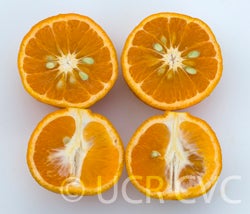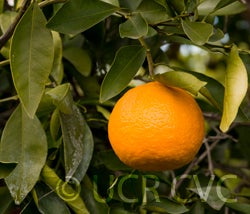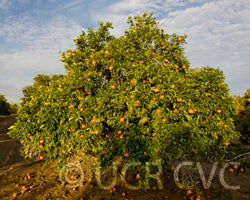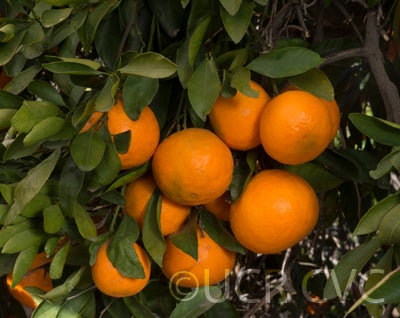Citrus reticulata Blanco
CRC 3019
PI 539498
VI 2
Source
Received as budwood from the Citrus Research Center, Riverside, Ca, early 1900's.
Parentage/origins
Rootstocks of accession
Carrizo citrange, C-35 citrange
Season of ripeness at Riverside
February to April
Description from The Citrus Industry Vol. 1 (1967)
"Fruit medium-large, moderately to slightly oblate; base commonly slightly necked and furrowed; apex flattened or depressed with visible areolar area. Rind medium-thick, soft in texture, moderately adherent but peels fairly well; surface slightly rough and bumpy; color deep orange at maturity. Segments 10 to 12, separable without difficulty; axis medium and semi-hollow. Flesh color deep orange; tender and juicy; flavor rich, sprightly, and distinctive (tart until very mature). Seeds polyembryonic, numerous and cotyledons pale greenish-yellow. Very late in season of maturity (slightly ahead of King). Retains quality if left on tree but puffs somewhat.
Tree moderately vigorous, spreading and round-topped; similar to satsuma but larger and more vigorous; thornless, with rather stout, spreading and drooping branches; leaves dark green and satsuma-like. Hardy to cold and productive. Slight tendency to alternate bearing.
This very late ripening and richly flavored variety is an Owari satsuma-King mandarin hybrid created in 1915 by H. B. Frost (1935) of the University of California Citrus Research Center, Riverside, and named and introduced in 1935. Though outstanding in flavor, Kara has not achieved commercial importance, presumably because of the competition provided by oranges at its season of maturity, and its seediness."
Availability
Commercially available in California through the Citrus Clonal Protection Program. Click here to order budwood.
USDA Germplasm Resources Information Network page for Kara mandarin




